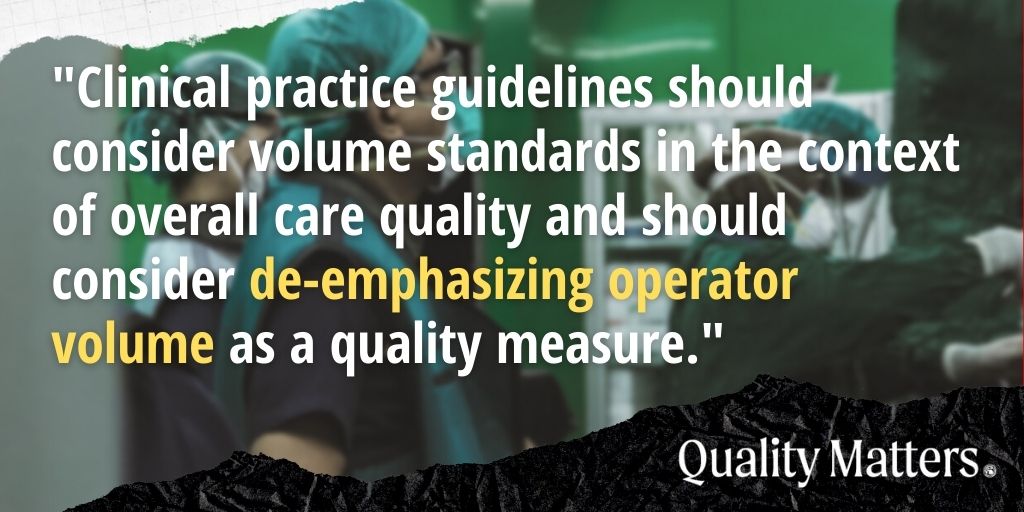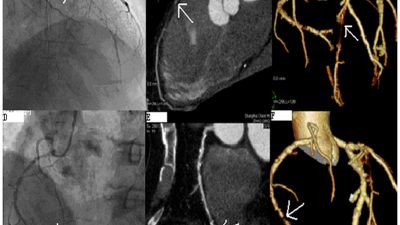Recent research offers classifications of PCI operator types, which provide insight into opportunities for quality improvement.
A recent study from December 2021 – Percutaneous Coronary Intervention Operator Profiles and Associations With In-Hospital Mortality – examined data from 2,397,419 individual PCI procedures performed by 7,706 operators over a 4-year period in an effort to better understand how operator case mix impacts operator practice and patient outcomes.
Specifically, the study used an agglomerative hierarchical clustering algorithm to put PCI operators into phenotypical groups, and then compared risk-adjusted in-hospital patient mortality between clusters. This analysis extends beyond solely looking at operator volume to examine links between patient outcomes and operator treatment settings (rural hospitals, university hospitals, and other care settings); frequency of radial access; use of intracoronary imaging, atherectomy, and mechanical circulatory support (MCS); patient risk and complexity; and a few other criteria.
Should PCI operator volume be de-emphasized as a metric?
By more thoroughly analyzing the impact on patient outcomes of variables beyond operator volume, this study reflects guidance from a 2018 report from the NCDR CathPCI registry:
“Because the association between operator volumes and in-hospital mortality is small and operator volume is not associated with long-term outcomes among patients surviving the index hospitalization, clinical practice guidelines should consider volume standards in the context of overall care quality and should consider de-emphasizing operator volume as a quality measure.”
And with annual PCI procedures in the U.S. approaching 1 million per year, in addition to an increasing focus on complex PCI patients, disentangling the myriad variables that come to bear on patient outcomes will only become more important in the years to come.

PCI operator types facilitate self-assessment.
Jacob Doll, MD, lead author on the December 2021 study, spoke to the impetus behind the research by emphasizing the need to supplement existing self-assessment capacity for PCI operators. He noted that in general, accurate self-assessments are not common, and physicians are not unique in this regard.
Doll and his co-authors hope that with their framework of four operator phenotypes, physicians and healthcare administrators will be able to more accurately understand individual operators’ performance and case mix against their peers nationally.
Further, by using the PCI operator phenotype categories as a lens for self-assessment, the researchers hope that operators and the health systems in which they work will be able to engage in more intentional decision-making around what additional training and resources may be required in order to improve performance and patient outcomes.
This study underscores the connection between the complexity of need observed across a wide range of patients, and operator competencies, which are variably reinforced and strengthened depending on individual operator case mix and treatment setting. These insights could inspire further research to more precisely examine operator experience in terms of procedures performed, methods used, care team composition, and treatment setting, in an effort to grow operator competency and improve patient outcomes in tandem.
Ultimately, if the operator phenotype clusters and attendant patient outcomes hold up to continued study and scrutiny, then healthcare systems may have the opportunity to intentionally improve patient outcomes by manipulating the case mix of PCI operators.
This presents the chance to develop a ‘virtuous cycle’ of continued learning and experience for operators, which translates to healthcare providers being able to meet the needs of more patients with increasingly complex needs.
Moving from self-assessment to quality structured feedback.
Although the study from December 2021 opens the door to more meaningful self-assessment, there still remain questions around what impact external feedback has on physician performance and patient management. How can healthcare systems build in feedback protocols that deliver timely, actionable information to healthcare professionals in a way that can be heard, understood, and applied to daily work?
This 2016 paper from Velma Payne and Sylvia Hysong begins to examine this question with a qualitative study examining the components of Audit and Feedback (A&F) strategies, and how these feedback components are perceived and acted upon by healthcare professionals.
According to the study, the three primary characteristics of feedback that impact acceptance are the feedback content (i.e. what is being communicated to professionals, and in what manner/tone), temporality (i.e. the timeliness of feedback – providing feedback soon enough after an event for the data being shared to be immediately actionable), and the source of feedback (i.e. the feedback coming from a trusted source in the eyes of the recipient).
In other words, the qualitative aspects of feedback (not the data being shared) are the aspects which move a feedback recipient from consideration to action. This means that when offering feedback to a professional, it is equally important that the data presented appropriately reflect the individual’s work experience, as it is that the data are themselves accurate.
If professionals can not see “their” experience reflected in the data and information, they are far less likely to accept the feedback and use it as guidance to make intentional changes in their practice. This is true for positive recognition in addition to feedback about sub-par performance.
If the strengths identified in a professional’s performance are intended to be built upon, it is important to offer positive feedback in a way that accurately contextualizes the work of the professional, and which situates the desired behaviors and outcomes within that individual professional’s locus of control. (Much in the way it would be superfluous to thank someone for being part of a team that does good work, it is about what that individual does to impact team performance which is most important to highlight).
In the study it is noted that, “Based on physicians’ mixed reaction to clinical-performance feedback, physicians are accepting of feedback that is timely, personalized and includes patient-level data that permits them to identify specific areas of improvement.”
Another concern raised by the study was the sense among healthcare professionals that there were insufficient resources (time, funds, team members) to address the problems identified by data. This point speaks to the need for supportive, facilitative feedback. You can’t just tell someone what they did incorrectly, or what is amiss. They must feel supported and receive concrete assistance (resources, training, etc.) in order to work towards resolving the problem.
Finally, the study emphasized the need for recipients of feedback to have thorough understanding and input into the assessment process: “[The] research reveals that feedback acceptance may have as much to do with knowledge and approval of the assessment process as it does the feedback.”
Transparency and open communication are essential to any feedback or assessment process. Without the buy-in that transparency and open communication facilitate, many pieces of feedback intended to improve individual performance may be falling on deaf ears.

Accreditation Can Help Establish, Improve Structured Feedback
When it comes to establishing or improving quality improvement and PCI operator feedback protocols, sometimes a third-party perspective is just what the doctor ordered. Supportive, quality-focused accreditation like that offered by Accreditation for Cardiovascular Excellence can help establish transparency and clinician buy-in crucial to the acceptance of assessment and feedback.
Ultimately, this facilitates the creation of robust and impactful quality improvement and learning systems for the cath lab.












